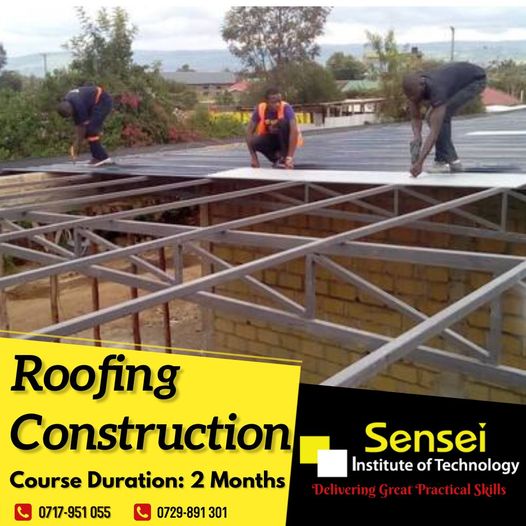Description
Scaffolding Course In Kenya
Getting a good college Scaffolding Course can be tedious, but not any longer. Sensei School of Construction is now offering Scaffolding Course.
Scaffolding is a temporary structure for supporting working crew and materials to aid the construction, maintenance and repair of buildings, bridges, and other structures
In this course, you will learn the various types of scaffolds, how to use them to prepare and plan scaffolding work
Course Requirements
- ID and two copies of the same
- 2 passport photos
- Training boots
- Boarders to carry blankets, bed sheets, toiletries, bucket, plate, cup, spoon etc.
What are the types of scaffolds on construction?
- Systems Scaffolding – systems scaffolding consists primarily of vertical and horizontal pre-engineered components that connect together in a systematic fashion.
- Frame & Brace Scaffolding – Very common for residential and commercial applications. This type of modularized scaffolding consists of frames, braces, planks, and bases.
- Ladder or trestle scaffolding- This is used for light work and is usually portable. It consists of two ladders with the top ends joined together by planks so that a person can work on this platform.
- Suspended scaffolding – In tall buildings for working at high levels, such as the painting of tall buildings, it is more convenient and economical to suspend the working platform from above the ground than to support it from the ground.
What are the major parts of scaffolding?
- Standards: The vertical posts (also called uprights).
- Ledgers: The horizontal members parallel to the wall.
- Braces: The bracing system.
- Putlogs: Horizontal members normal to the wall.
- Transoms: Putlogs whose both ends are supported on ledgers in double scaffolding.
- Bridle: Member used to bridge openings.
- Boarding: Planks on which workmen stand.
- Guard rail: Rail provided at about 1 m level to guard the men working on the boarding.
- Toe board: Boards placed parallel to boarding near the wall to give protection to workers.
- Base plate or sole plate: Plates on the ground supporting standards.
What is the importance of scaffolding?
- Safety – Safety is one of the benefits that scaffolding offers. Everyone wants to be safe wherever they work. Working in construction comes with a number of safety risks. Ladders are often not sufficient enough for working on a construction project, particularly on a large scale.
- Access – Scaffolding provides workers with safe access to parts of the building they are working on.
- Position – It provides a better position to work on walls, ceilings, outdoor spaces and windows.
- Efficiency – Working on a safe platform gives construction workers the peace of mind of safety in which to carry out their duties.




Reviews
There are no reviews yet.